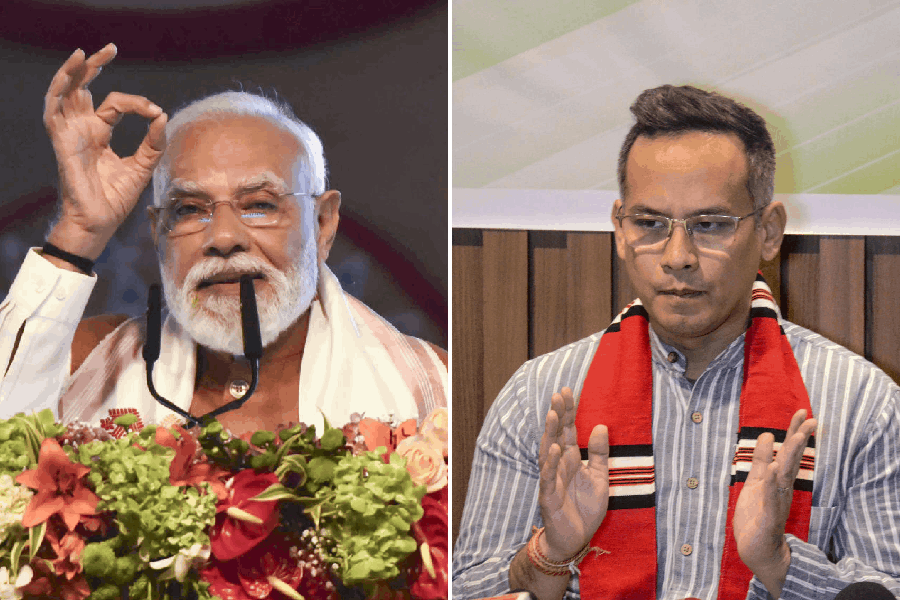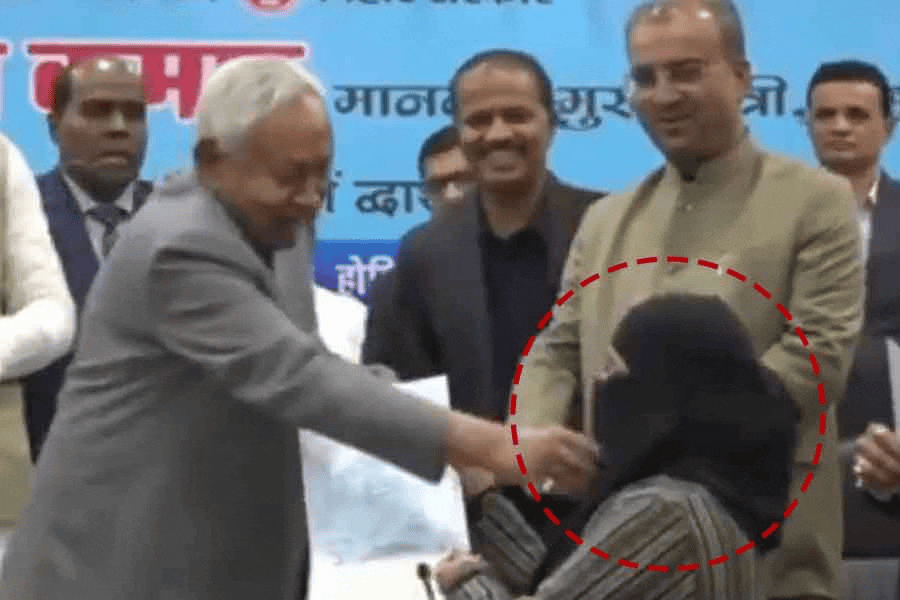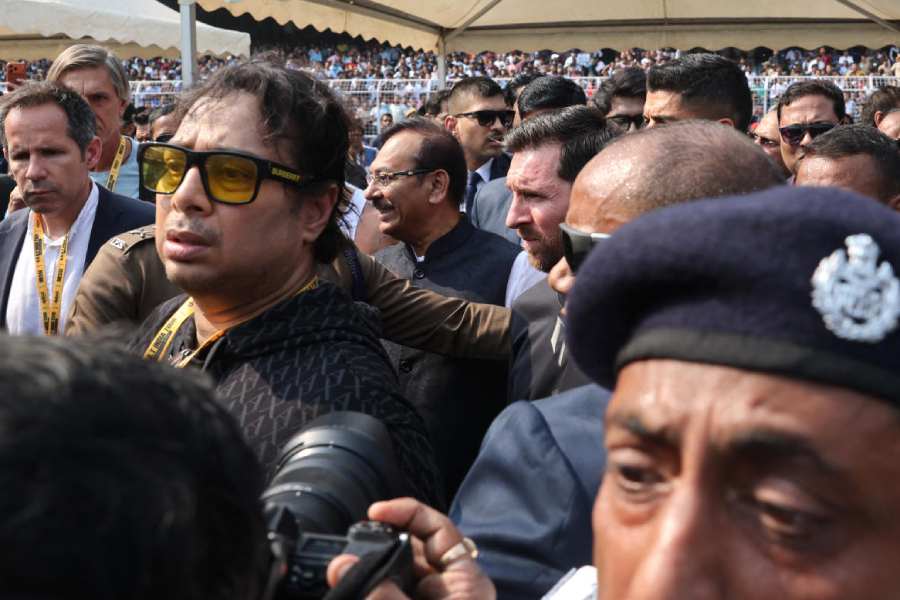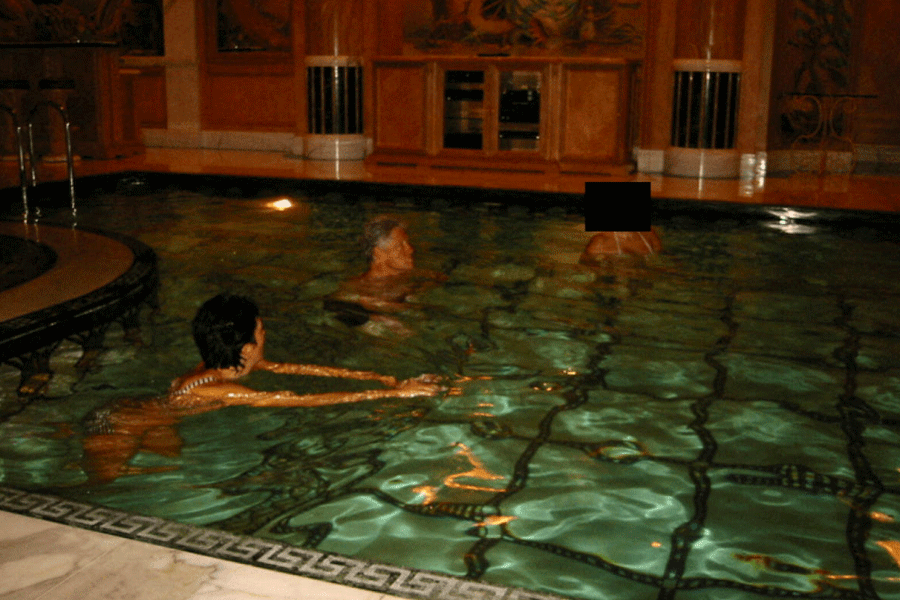Kalimpong, a small town between Darjeeling and Gangtok, is a three-hour drive from Siliguri, my ancestral home.
But I never visited the place as long as I was in Siliguri. It was only after I settled down in Calcutta that I decided to look around Siliguri, which I visit frequently.
Visits to relatives’ houses and family functions generally occupy most of my time in Siliguri, but this time I was determined to look around too.
I decided to visit Kalimpong on my cousin brother’s advice.
Before the trip, I gathered some information about the hill town. It is located nearly 1,250 meters above sea level and offers an excellent view of the Kanchenjunga range and other Himalayan peaks.
The name Kalimpong has three origins. One, it means a place where local tribesmen gather to organise sports. Two, it takes its name from the Bhutanese king’s ministerial court. Three, it is named after Kaulim bong, a fibre plant found in the region.
The languages popularly spoken here are Gorkha, Nepali, Hindi, Bengali and English.
Kalimpong has five distinct seasons: summer, monsoon, autumn, winter and spring. During monsoon and winter, the town is often enveloped by fog. The annual temperatures range from a high of 30°C (in summer, between March and June) to a low of -4°C (in winter, between November and February). The best season to visit Kalimpong is May and June, before the monsoons, and September and October, before the winter sets in.
We started for Kalimpong around 8am on a sunny September morning, sparkling after a night’s shower.
We took Sevoke Road, keeping the Siliguri Akashvani station to our right. My cousin brother was driving his new Tata Scorpio and I was sitting by his side.
It was a smooth journey and we enjoyed crossing the Salugara-Shalbari forest before taking our first break at Sevoke.
After a few minutes’ halt at Sevoke, we continued our journey.
At Sevoke, the road forks into two — one goes towards Kalimpong and the other towards Dooars and Assam.
The road that goes to Dooars and Assam has two bridges on the Teesta.
We ignored these two bridges — a rail bridge on the right, connecting the Dooars and Assam, and a road bridge, the Sevoke-Coronation Bridge, connecting the Dooars, Assam and Bhutan.
This bridge was constructed by the British to celebrate the coronation of George V. This arch-shaped, hanging bridge is a unique example of architectural skill.
We took the road to Kalimpong. The gushing, bubbly Teesta travelled along, parallel to the road, and on the other side there were undulating pine-covered hills. The road is one of the most scenic routes in this part of the region. A wonderful calm and peace prevailed, punctuated only by the gurgle of the Teesta.
On our way, we crossed Kalijhora, which is popular for film shootings. The Hindi film Barsaat Ki Ek Raat, (Anushandhan in Bengali), starring Amitabh Bachchan and Rakhi Gulzar, was filmed here.
Our next stop was Teesta Bazaar. Here we crossed the river through an interesting hanging bridge, locally called paltan or army bridge. The army controls the traffic on the bridge, allowing only one car to pass at a time.
After crossing Teesta Bazaar and the river, the road again forked into two. We ignored the one that went to Gangtok and took the other one and finally entered Kalimpong Valley.
Only then did I understand why the valley was famous for flowers. The rest of the journey passed in a blaze of colours.
The beauty and richness of the flora here cannot be described in words.
It is an experience and at that moment seemed an illusion, as if I had entered a world of dreams.
I came out of the trance only after we reached Kalimpong, where we put up at Hotel Silver Oaks.
It was already 11.30am and we decided to look around without wasting a single moment.
There is little to see in the town except the Buddhist monasteries. So we stared with the Tharpa Choeling Gompha, which belongs to Yellow hat (Gelukpa) section of Tibetan Buddhism. It was around half-an-hour’s walk from our hotel. We also visited the Tongsa Gompha, a Bhutanese monastery, the oldest in the area.
Our next destination was Zong Dog Palri Fo-Brang Gompha. It is situated on Durpin Dara Hill and was constructed by the Dalai Lama. When we entered the main prayer room, the wall paintings and their colours rendered us speechless. Next we saw the Kalimpong golf ground and then had lunch at the popular China Garden near the bus stand.
Afterwards, we went to the Kalimpong flower nursery that houses various types of gladioli and orchids. The caretaker told us that the flowers were exported to several cities in the country.
Next morning, we visited Gouripur house, where Rabindranath Tagore had stayed for a few days. Some items used by him are still preserved there.
Our next destination was Mangal Dham memorial temple, which is considered to be one of the most splendid temples in the country.
The main market area was next on the agenda. Here we peeped into handicrafts and curio shops.
They were full of eye-catching paintings, statues and wall hangings.
I was surprised at the expensive items, but as I started bargaining, the price spiralled down. I bought a small replica of the traditional Nepali dagger.
It was 7pm by the time we returned to the hotel. Next morning we were going back to Siliguri. I sat alone on the balcony of my room to recall the wonderful two days.
The magnificent view of Green Valley and the Kanchenjunga, the blooming gardens, the solemnity of the age-old gomphas and monasteries, the cute smiling faces of young lamas and monks and, of course, the kind-hearted people, are treasured in my memory forever.
Going
The nearest airport is Bagdogra, about 80km from Kalimpong.There are flights to Guwahati. Bagdogra is a three-hour journey by bus or taxi. Nearest rail stations are New Jailpaiguri and Siliguri. Jeeps can be hired in Kalimpong for a local tour.
Staying
There are several hotels in Kalimpong offering a range of tariff. You can also get accommodation at the West Bengal Tourism Development Corporation’s tourist lodge.
Nabotpal Chanda











